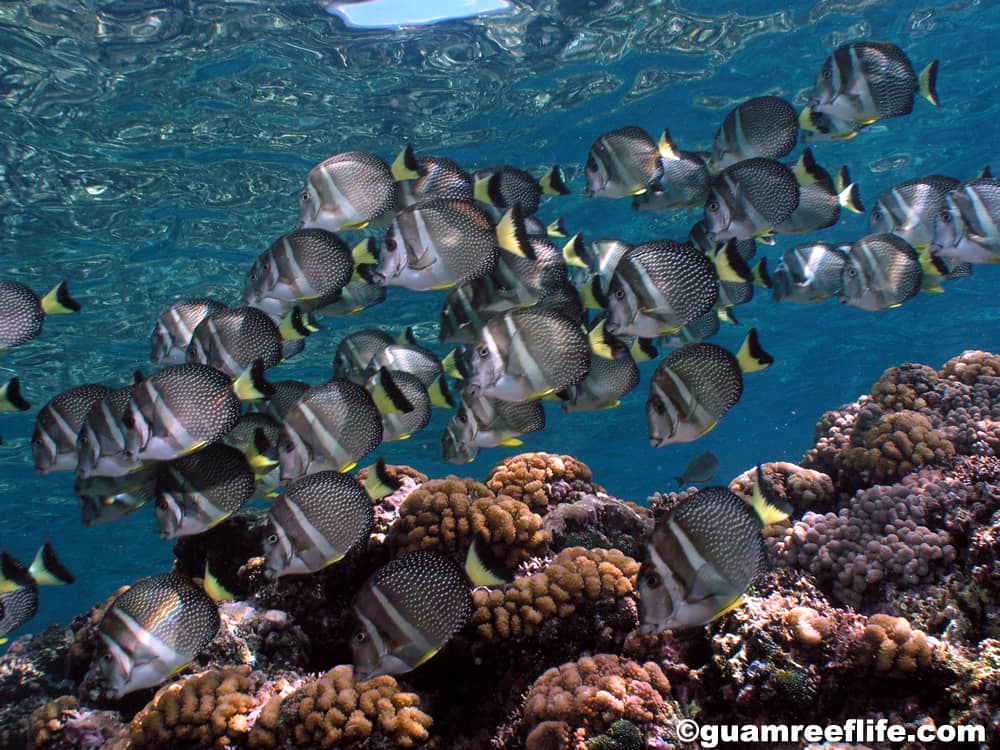University of Guam researcher discovers unusual mortality rates in surgeonfishes
University of Guam researcher discovers unusual mortality rates in surgeonfishes
University of Guam researcher discovers unusual mortality rates in surgeonfishes
8/23/2024
An international team of researchers led by an assistant professor from the University of Guam discovered that while most surgeonfishes mature quickly and die young, some develop slowly and live for several decades.
“This is an extremely rare trait in coastal fishes, and likely contributes to a higher sustainability of surgeonfish fisheries in the Mariana Islands and elsewhere,” said Dr. Brett Taylor of UOG’s Sea Grant and Marine Laboratory, the lead researcher on the project.
Taylor first noticed discrepancies in the maturity rate and lifespan of surgeonfishes
while studying fish in the Western Pacific. Taylor’s team sampled surgeonfish species
from the Mariana Islands and looked at their basic biology: how long they live, how
fast they grow, how big they get, when they start reproducing and when they die.
“Their death rate stood out as bizarre and really went against conventional wisdom, so that motivated the second study,” he said.
The second study included surgeonfishes from tropical oceans around the world. The researchers learned that the combination of fast-paced development and long lifespan is found among surgeonfishes everywhere.
“This is certainly the only study of its kind to critically examine the patterns of mortality in a family of reef fishes like this, and the findings are novel in that very few species, if any, have ever shown a similar pattern,” he said. “Part of the novelty lies in the fact that over 700 scientific papers have been written that focus on surgeonfishes, yet to date none have identified the patterns that we demonstrate on a global scale.”
Scientifically known as Acanthuridae, surgeonfishes comprise up to 30% of coastal fisheries in the Indo-Pacific region. They are important species to local economies, and they are a valuable food source.
The fish studied in the Marianas include ataga, or bluespine unicornfish (Naso unicornis); hangon, orangespine unicornfish (Naso lituratus); gupau, which include a few species such as yellowfin (Acanthurus xanthopterus), ringtail (Acanthurus blochii), and epaulette surgeonfish (Acanthurus nigricauda); kichu, convict surgeonfish (Acanthurus triostegus); hamoktan, whitespotted surgeonfish (Acanthurus guttatus); and hiyok, lined surgeonfish (Acanthurus lineatus).
Surgeonfishes are a diverse group with life-history patterns that diverge from most other fish families. For instance, some of the smallest species are often the longest lived, reaching ages of more than 20 years. Some species mature at small body sizes while others mature when they are nearly fully grown.
The research will help fisheries officials make informed decisions about how to manage resources.
“The biology of harvested species is a key attribute that needs to be understood in order to design and apply appropriate management practices, especially for fisheries,” Taylor said. “Our results demonstrate that surgeonfishes are likely more resilient to fishing pressure, which is generally good news and corroborates prior studies that generally find that surgeonfishes are less impacted by fishing than might be expected.”
The studies were funded by a National Fish and Wildlife Foundation grant and NOAA Saltonstall-Kennedy Grant Program.
The studies can be read at:
https://link.springer.com/article/10.1007/s11160-023-09816-0
https://onlinelibrary.wiley.com/doi/full/10.1111/faf.12853


